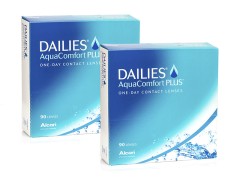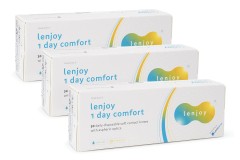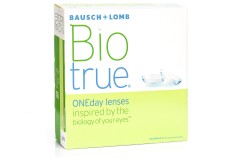Do I need glasses? 8 signs you might need glasses

Table of contents
Many people may not realise they have vision problems until they experience significant difficulties like squinting at signs, struggling to read small print, or frequent headaches. Have you ever questioned whether you might need prescription glasses?
"In the world of eye care, the signs that you might need glasses can vary greatly. Some patients begin to struggle with reading street signs from a distance, while others notice that the details of a landscape aren't as sharp as they used to be," says Lentiamo optometrist Eliška Malinová, Bc.
Read on to learn more from Eliška and the Lentiamo experts about eight common signs that could indicate the need for glasses. Learn about visual impairments that require corrective lenses, plus get expert advice about when it's important to get your eyes checked.
Impact of vision problems on your daily life
Challenges caused by vision problems extend to various aspects of daily life, such as driving, reading, playing sports, or using computers. Difficulty seeing clearly can significantly hinder these activities, underscoring the importance of addressing vision issues promptly and effectively.
Optometrist insights
"In our optometrist's chair, we also see the ways how uncorrected vision can affect people’s lives. For example, it might be a student struggling to read the chalkboard, a professional driver having some trouble viewing the signs around the road, or a grandmother who can’t read her favourite books anymore as her old glasses are not strong enough. These are everyday challenges that glasses can transform into much more comfortable experiences and improve the quality of life.
"The problems with vision could look like squinting during conversations, frequent headaches after hours of screen time, or even mistaking friends for strangers. Thankfully, glasses are a great solution for that."
Eliška Malinová, Bc.
Signs you need glasses

The World Health Organization estimates that 2.2 billion people worldwide have a near or distance vision impairment. Approximately one billion of them are thought to have preventable or unaddressed vision issues. To determine if you're amongst those who might have a vision impairment, consider these eight common signs that might mean you need glasses.
Blurred vision
Persistent blurred vision is a major indicator that you might need glasses. If objects (near or far) appear hazy, fuzzy, or unclear, your vision might benefit from some type of correction. Difficulty seeing road signs or holding reading material farther away are just a couple of signs glasses could help clear up your vision.
Dizziness
Uncorrected refractive errors or wearing the wrong prescription glasses can cause dizziness, lightheadedness, or nausea. If you think your symptoms may be stemming from your vision, contact an eye specialist to schedule an appointment.
Eye strain and fatigue
Spending extended periods reading or using digital devices without proper vision correction, such as during school or work, can lead to eye strain and fatigue. Frequent feelings of discomfort or tiredness in your eyes should prompt you to consider glasses as an option for relief.
In addition, if you don't utilise the proper correction for an extended period of time (in terms of years), the material of the intraocular lens may become tired or fatigued. This could cause further eye related problems.
Double vision
Seeing doubled images of a single object can signify a condition known as diplopia, or double vision. There are different types of double vision that can mean problems with the eye itself or point to a more serious, underlying condition. Depending on the cause, double vision can be corrected with the right glasses prescription in some cases.
Always consult your eye care provider right away if you experience sudden double vision. While generally not a cause for concern, the sudden onset of double vision can be the sign of a serious health problem.
Difficulty seeing at night
If you experience challenges while driving at night, such as reduced visibility or heightened sensitivity to glare, your vision might need correction. Glasses can improve your ability to navigate low-light conditions by addressing the underlying vision issue. This is particularly crucial for ensuring safe driving during nighttime hours.
Rubbing eyes
Vision problems can cause eye fatigue that leads to frequent eye rubbing throughout the day. Glasses can prevent eye strain and fatigue by reducing the need for your eyes to work harder than necessary.
These habits might also contribute to long-term eye health issues or eye injury if left unaddressed.1
Squinting and tilting head
If squinting to bring objects into focus has become a habitual response, it's time to prioritise an eye exam for glasses. Regularly squinting or tilting your head impacts the amount of light entering the eye, which can make details clearer. However, squinting can also lead to discomfort and strain.
Headaches
Persistent headaches after reading or screen usage, particularly starting around midday, can be linked to uncorrected vision issues. Glasses can alleviate the discomfort if the cause of your headaches is a problem with your sight. Headaches can also be linked to other health problems so it's important to contact a medical provider for a proper diagnosis.
Watery eyes
Surprisingly, struggling to see clearly can prompt excessive tearing or watery eyes. Watery eyes can also result from allergies or other health issues, so it's important to have a healthcare professional determine the cause of your symptoms.
Common vision problems that require glasses

Various vision conditions might need correction for optimal visual clarity and comfort. Some of the main issues include:
Myopia
Myopia (nearsightedness) is when distant objects appear blurry while very close objects remain clear. Minus (-) lenses are used to correct myopia. Globally, uncorrected myopia is the leading cause of distance vision impairment.2
Hyperopia
Hyperopia (farsightedness) is when you mainly have difficulty with focusing on close-up objects, but distant objects could also appear not as sharp as they should be. Plus (+) lenses are used to correct hyperopia.
Astigmatism
Astigmatism results in distorted or blurred vision mostly due to an irregularly shaped cornea. Corrective glasses or toric contact lenses are often used to correct astigmatism.
Presbyopia
Presbyopia is an age-related condition that affects close-up vision. The eye's lens loses flexibility, making reading or viewing close objects difficult. Reading glasses or multifocal lenses alleviate this issue.
How can I check my eyesight at home?
If you experience any of the symptoms above and suspect you might need to get your eyes examined, there are different online tests available to check your eyesight at home. Try one of these while you wait for your appointment with your eye care specialist.
- Try a general eye test using a Snellen chart to test your visual acuity.
- Use an Amsler grid test if you're interested in testing for and monitoring macular degeneration.
- Astigmatism tests are a simple tool if you think you might have astigmatism.
Note: At home eye tests should be used to complement, not replace, comprehensive evaluations by a specialist. They are tools intended to satisfy curiosity or monitor changes in your vision. Always schedule an eye examination with your eye care specialist if you have concerns or are seeking a diagnosis.
When to see an eye care specialist?
You should visit your eye care specialist if you experience any of the symptoms listed above. Even if you’ve worn glasses for years, regular eye examinations are important. Prescriptions can change over time which can affect your visual clarity.
During an eye exam, a professional can identify changes in your vision and update your prescription as needed. The eye exam measures various aspects of eyesight, including visual acuity, refractive errors, and, importantly, eye health.
Age-related changes, diseases, pre-existing conditions, and more can determine the frequency of visits. The specialist will also recommend how frequently you should have your eyes checked, typically advising once every one to two years depending on your situation.
What happens if I don’t wear my glasses?
While not wearing your prescription glasses won't harm your eyes, it can cause discomfort and challenges.
For adults, not wearing glasses can strain the eyes, which can lead to headaches or any of the symptoms listed above. In some cases, eyesight in adults can worsen if glasses aren't worn as directed. Children should wear glasses as directed by their eye care specialist to support proper visual development.
Consider the impact of not wearing glasses beyond just vision. The inability to participate in activities or your ability to stay safe on the road are also important to consider.
Benefits of glasses
Prescription glasses do more than just improve your vision, they enrich your overall quality of life. They provide clearer vision which increases comfort and ease in daily tasks and activities like driving, reading, and using digital devices.
Glasses also offer added protection from harmful UV rays, reduce eye strain, and act as a stylish accessory.
Closing thoughts from Lentiamo
Whether you're exploring reading glasses or seeking prescription glasses for specific vision concerns, an eye care professional will help you achieve clearer, more comfortable vision.
Vision and eye health affect overall well-being. If you notice any of the signs discussed here, schedule an eye examination with your provider.
Read more
Want to know more about eye health and glasses? Check out our glasses guide to learn about eye exams, glasses materials, and more.
Sources
1. National Library of Medicine, The correlation between keratoconus and eye rubbing: a review
2. American Academy of Ophthalmology, Global Prevalence of Myopia and High Myopia and Temporal Trends from 2000 through 2050







